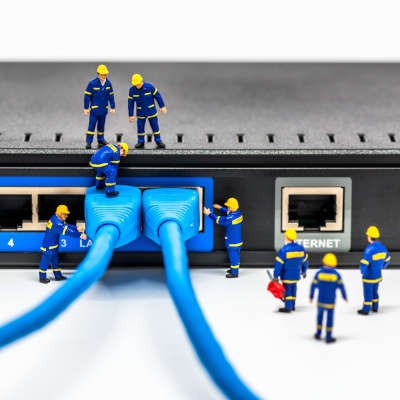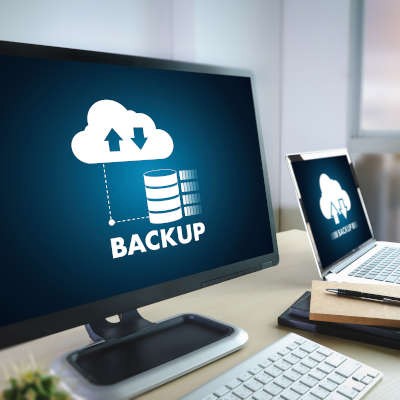Wireless Internet connectivity is an indispensable utility in today’s modern office. However, implementing one that will perform optimally is far from a straightforward task. Here, we wanted to offer you some tips to make the planning process for your Wi-Fi implementation both simpler, and more productive.
Computerware Blog
The COVID-19 pandemic has had a major effect on business. Despite this fact, we’re starting to get to the point where most businesses are at least being allowed to attempt to conduct business in a somewhat normal fashion, but it’s definitely a new world out there. Business owners in all lines of business are looking for that tool that can improve productivity, make their operations more efficient, and spit out the metrics they need to tweak them.
I want you to take a moment and consider something: is your business prepared to survive any kind of data disaster? If you aren’t, you need to ensure that your systems—all your systems—can recover from whatever feasible event might impact them. This is what is known as IT resilience. Let’s dive in a little deeper.
The impact of COVID-19 to businesses has been such that we will not likely return to the way business was run before all of this happened. A major factor to this is how businesses once made use of their technology. The shifts that have occurred in the last few months will not likely go away, even after the pandemic ends.
Like many other businesses, COVID-19 has foiled the big plans you had for 2020, but it has presented a different set of opportunities. Many businesses had deliberately avoided providing remote work opportunities for their employees, mostly out of the fear that their teams would become inefficient, less productive, and present management and security challenges. Now, after a few months with little choice but to suddenly embrace it, the major challenges are actually delivering the resources your nelly remote workforce needs to produce results in line with expectations.
Your business’ data is extremely important to the livelihood of your business and as a result, you need to have plans in place to protect it. Sure, you can invest in all the top notch cybersecurity tools and services, and they may keep you from getting your data stolen or corrupted, but what happens if something terrible happens to the servers that it is stored on? No level of threat detection is going to save a server if it is charred, under water, or its components are completely fried.
A lot of people didn’t take the novel Coronavirus seriously when it was first discovered outside of China in late February. Now four months later, as the pandemic rages on, people continue to work from home, have their hours cut, or be completely out of a job. For the business owner, this period has been filled with difficult decisions, including halting all major IT projects. If your business is looking for a solution to help them add the technology they need at a price that works for this period, here are three useful options.
As workplaces and offices everywhere have struggled to cope with the restrictions brought on by social distancing mandates, the adoption of automated solutions has surged ahead. Of course, this does open a few important questions to consider. For instance, what this could mean for employment post-pandemic, and how automation may be used in the future to mitigate the impacts we’re currently experiencing.
There is a saying that you hear a lot in business: Plan for the worst, hope for the best. This is typically related to data redundancy, cybersecurity, or one of any other proactive steps a business should take to control the continuity of their business. What happens when you plan for the worst, but the best comes to fruition? What happens when your business consistently meets demand, prospers without issue, and grows quickly? Today, we will take a look at some issues the small business owner has to deal with when his/her business isn’t so small anymore.
In normal circumstances, the virtual private network (VPN) is a great tool for people who work out of the office. With the COVID-19 outbreak pushing a lot of workers out of the office, the VPN has now become an essential part of a business’ day-to-day operations. Today, we’ll define the VPN and tell you why you’ll probably need a VPN designed for business use.
The COVID-19 outbreak has been a trying time for businesses and individuals, alike. Not much positive has come from it, as people, who typically band together in times of unease, are asked to stay away from each other. This has led to many people turning to their smartphones and Internet connections to communicate with the people they hold dear. With a national reliance on Internet connections there have been some new voices (and some familiar ones) advocating for the return of net neutrality. Today, we’ll remind you what net neutrality is and why this situation has people calling for a change.
If you are a subscriber of this blog, you know that each week we create content that aims to educate people about the value of managed services and the growing importance of information technology. Today, we thought it would be useful to put together a glossary of some terms that we regularly use to ensure our readers understand what we are referencing.
Monitoring parts of your business is a good practice as it allows you to get out in front of any potential problem it may have. As IT is concerned, monitoring is a crucial part of ensuring that every part of your business’ computing infrastructure is working as intended. Today, we thought we’d discuss the tools used to monitor IT networks and infrastructure, and what effect that can have on your business.
The G Suite is clearly a project that Google is far from finished with, as they have consistently made improvements to the suite and its included software. Recently, a few were added that could very much benefit a business’ users. Let’s go over a selection of these updates, and the benefits you could see as a result.




















